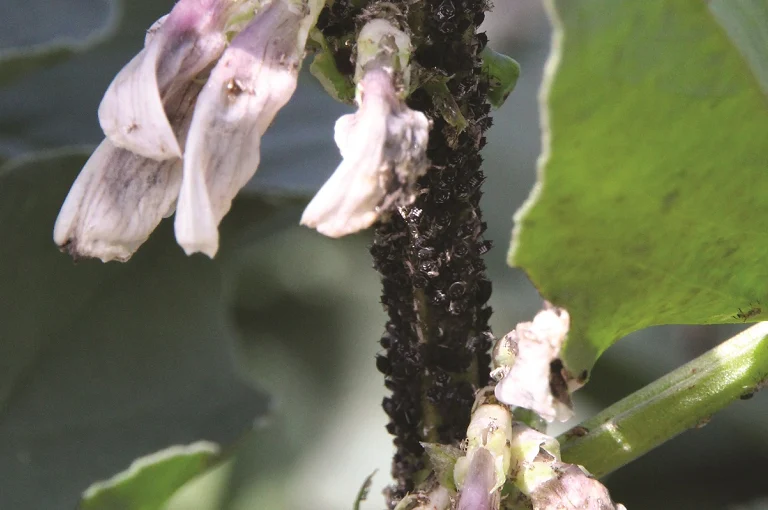
Black Bean Aphid
Aphis fabae
Identification
Black or dark olive green, 1.5-3 mm long.
Symptoms
A major pest of both sugar beet and beans causing damage by direct feeding. In beans plants lose vigour and flowers and pods are affected resulting in poor pod development and loss of yield. Black bean aphid colonies are very conspicuous on individual plant stems and leaves.
Life-cycle
The overwintering plant host is spindle (Euonymus europaeus). Eggs hatch in early spring and colonies form on young leaves and shoots. Winged forms appear in May and June and in suitable weather conditions these migrate to a wide range of summer hosts and have been recorded on over 300 plant species. In warm conditions colonies can build-up rapidly and when over-population causes crowding, winged forms are produced to widen distribution.
Importance
Spring beans are more at risk than winter beans as flowering coincides with aphid migration. The black bean aphid can transmit more than 30 viruses.
Threshold
Varies from 2.5-10 % plants infested depending on crop growth stage.

Aphis fabae


